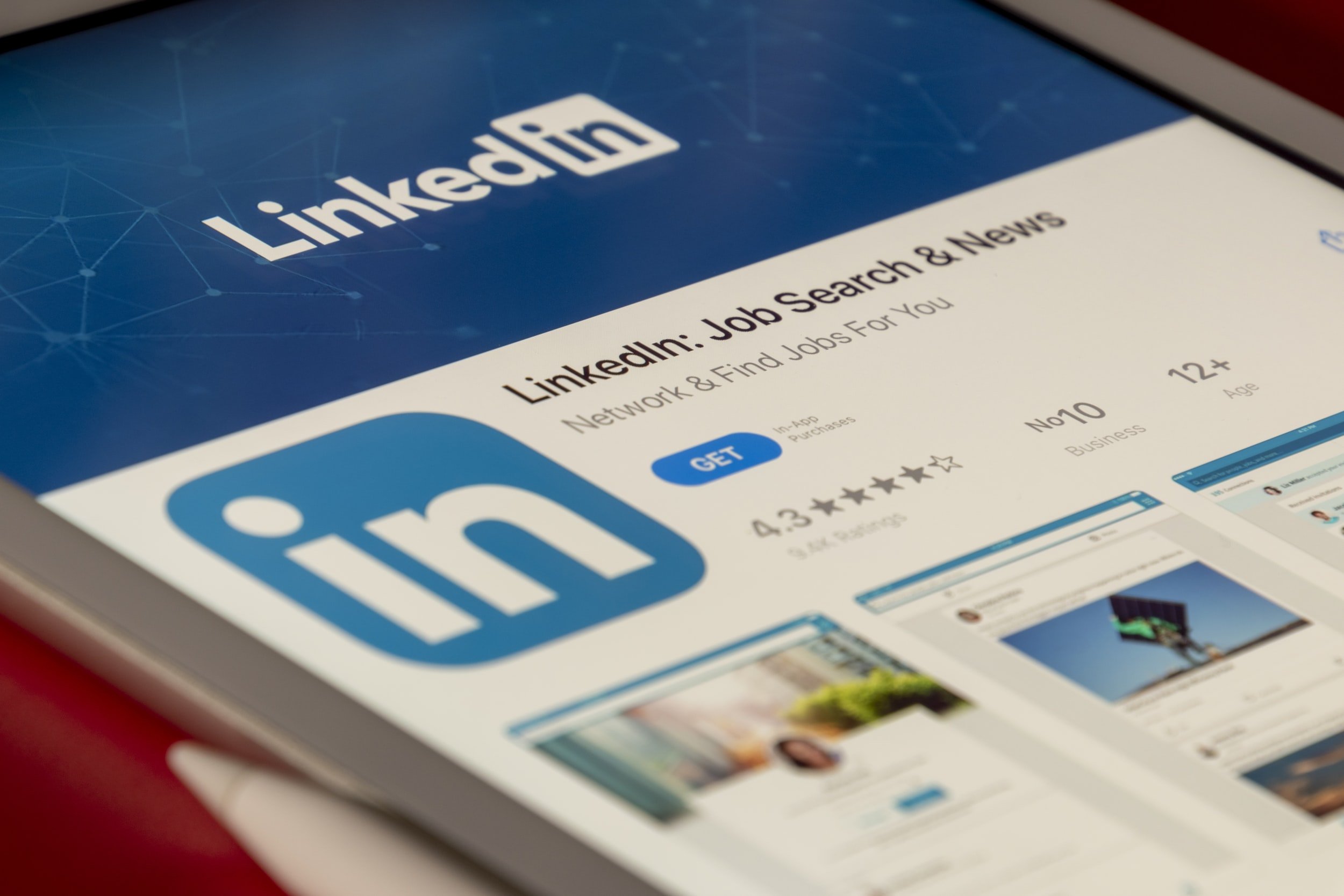You are wasting your money on video content
You spend all this money creating a high-quality video, but what now? We aren't saying you don't need high-quality video content to stand out because the world of digital content is becoming more and more saturated with low-quality video content each year. We are instead saying you can't just create a piece of content and then do nothing with it but post it on Facebook. Using your video content properly is just as important as creating a high-quality video. It won't achieve your objectives if you aren't correctly advertising and marketing your video content. Whether that's getting 10 new customers or 10,000, reaching your employees or current customers— it is essential to develop a marketing plan of where your content will end up. The list below is 4 tips and tricks for getting the most out of your video content.
APEGA IMAX Commercial Shown at the Telus World of Science Edmonton
1.Is your objective clear?
Let's stop and think about why you are creating your content. There isn't a huge point in creating any content online without a clear goal in mind. Purpose allows you to develop your metrics and determine if your campaign was successful.
2. What are specific quantifiable and qualifiable metrics for your video content?
Quantifiable metrics are number-based metrics that are extremely clear if you reach them. For example, you want 100,000 people to see your video and 1000 people to buy your product. You need to have a strong call to action on your video linked to a landing page to determine if your video content had that impact.
Qualifiable metrics are more difficult to measure because they are discretionary-based metrics and rely on the opinion of individuals to decide if they were met. When creating qualifiable metrics it is best to also develop a rubric of criteria to determine if the goals were met. For example, you want employees to be more satisfied with their jobs as a result of your company video. Rubric criteria for this situation could include the score on a survey about how they viewed the company after watching the video, overall productivity shortly after, etc.
3. What platform is your audience on?
First off who is your audience?
What are their hobbies?
What do they do as a career
Where do they live?
What age are they?
Are they your regular audience or new customers?
With the answers to these questions in mind read below to find out where you can best target your audience:
Facebook has the largest audience out of any other platform, which means you can reach a broad range of people. It also offers the ability to advertise your content to particular audiences. In Canada, Facebook has over 31 million users on the platform. However, the amount of advertising on Facebook makes it challenging to stand out in any significant way without high-quality and well-targeted content. 32.4% of Facebook’s audience is aged 25-34. The average engagement rate for Facebook video posts is 0.26% as compared to 0.18% on regular content.
Source: Hootsuite
Instagram is a very visual platform from posts to stories to reels. Video can be a highly effective way to capture your audience's attention on this form of social media. According to a Hootsuite article from earlier this year, Instagram has over 1 billion users with 500 million accounts actively viewing Instagram stories every day. Canada alone has 15 million active users. On Instagram, people aged 25-34 years old represent the highest proportion of marketable users, with 16.5% female users and 16.6% male users within that age range. Additional interesting demographics about Instagram include top interests on the platform are travel (45%), music (44%), and food and drink (43%).
Source: Hootsuite
Source: Facebook
Twitter is an excellent platform for B2B businesses to create organic content because of the ease with which brands can quickly engage with each other through retweeting. Over 2020 videos views on Twitter are up over 62%, making it an excellent platform for creative visual advertising content. Twitter has a total of 187 million active monetizable users. The largest demographic of Twitter is people aged 28-34, predominately male, making up 28.9% of their active user base. 42% of Canadians have a Twitter account. Interestingly, Twitter users also tend to have a higher annual income and are more likely to have a college degree.
Source: Hootsuite
Youtube
Youtube has 2 billion active logged-in users per month, the second most used platform behind Facebook, but its audience is estimated to be much broader because you don't have to be logged in to use the platform. 74% of adults in the U.S. use youtube as a resource and entertainment source. Youtube's top demographic is people under age 35, but not by much, allowing marketers to reach a broad range of people with highly engaging video content. Most interesting, according to Hootsuite, 50.9% of B2B decision-makers use YouTube to research purchases. 70% of users have purchased from an advertisement after seeing it on Youtube.
Advertisements on Youtube have a much higher rate of return when launched with a specific purpose and are used on the correct videos.
Source: Hootsuite
TV
On average, Canadians in 2018 watched 26.2 hours of traditional television every week, but those numbers are said to be declining and substituted for newer forms of media. People aged 50+ are the highest users of this traditional form of media on average, watching over 5 hours of TV per day compared to those 18-49 who watch 1-3 hours of television per day. Although 97% of Canadians continue to watch TV through all platforms, including mobile devices and the internet. Every year "Broadcasting distribution undertakings" (ex. Telus, Shaw, Bell, Rogers, etc.) continue to decline in subscriptions, with Canadian substituting them for more on-demand services such as Netflix and Disney+.
Television Ads tend to be more expensive to produce and are more difficult to specifically target based on demographics and behaviours as there are only 742 stations in Canada that may show a range of content. It may be beneficial when using this form of advertising to only show commercials when a show related to your product or service is on to narrow the audience. The best placement for advertisements is those shown right after a commercial break or right before a show returns due to the latency and recency effect. Ad placement within shows can also be highly effective in building rapport with the audience watching.
Source: Canadian Government CRTC
Tiktok
Tiktok is quickly becoming one of the world's most used platforms. Tiktok is now the most downloaded application platform on mobile devices. With 825 million marketable users. People aged 18-24 make up the majority of marketable users, with 24.7% female users and 18.1% male users within that age group. Tiktok exclusively uses video on their platform, capitalizing on the most engaging form of media with an algorithm that perfectly tailors the content to the individual user through algorithmic learning.
Source: Hootsuite
Linkedin
Canada has 17 million+ users on Linkedin. The largest demographic of LinkedIn users are between 25 to 34 years old at 59.9%. Linkedin is the most trusted social platform in the U.S. According to Hootsuite, "LinkedIn users are 20x more likely to re-share a video post," and 96% of B2B companies use LinkedIn for organic content marketing.
Advertisements on LinkedIn can reach up to 13% of the world's population with over 200 characteristics that specifically target individuals, making it a very effective marketing tool, especially for B2B companies.
Source: Hootsuite
Movie Previews
Movie preview commercials allow you to target a captive audience using a specific movie or genre of film. They tend to be high production, provide high entertainment value and emotional content for the audience. Although it has quite a few limitations, you can only show it to a small audience at one time. They don't necessarily have purchase intent when they are in a movie theatre, so awareness advertisements work best in this situation. It can also be difficult to measure precisely how many people see your advertising because they may not be in the theatre when your commercial is shown. Additionally, with the pandemic and the increase in the use of online streaming services, there has been a massive decrease in people attending theatres, so movie preview advertisements may not give you the best value for your money at this time.
Pinterest has 459 million active users worldwide, gaining more than 100 million users in 2020. 60% of its active users are female and go on the platform to seek ideas and inspiration. 30.4% of its users are women aged 25-34. Often users go onto the platform with buyers' intent and look for specific content. Users watch close to one billion videos a day on Pinterest. Most searches (95%) are unbranded, which presents the opportunity to become part of a buyer's consideration set when they purchase a product in the future. Users are also more likely to interact with an advertisement if shown within a scene.
Source: Hootsuite
Email has over 4 billion daily users around the world. Everyone uses email, whether for business, personal or marketing purposes. Email is a highly effective tool to directly communicate to your current customers and prospects. When used correctly, capturing emails can lead to a 760% increase in revenue for businesses. It can be a highly personal way to communicate as a brand directly with those who purchase your product or service. Additionally, attaching a video increases click-through rates by 200-300%
Source: https://snov.io/blog/email-marketing-statistics/
Company Website
The last primary use for video content is through your company website to show customers or through a private channel directly to your employees. Using your video on your website can be a highly effective way to distribute your video content to your existing network.
4. Do you need to pay for advertisements to achieve your goals and objectives?
It depends on your goal!
Using targeted paid advertisements will help you garner more significant results in gaining new customers when releasing your content out into the world. When creating advertisements, most social platforms allow you to get "scarily" specific with your audience's demographics, geography, and behaviours.
If your goal is just to reach your existing audience or employees you may not need to pay you just need to use your existing digital platforms.













